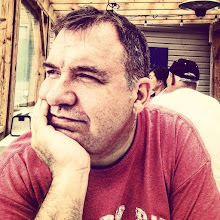SOCIAL STUDIES - Published Monday September 29th, 2008
Nothing brings out opinions like driving. Each of us, for some strange reason, feels that we are the best driver on the road; the only driver that knows the right way to do things.
Consider for a second that the last time you or I ever actually studied the rules of driving we were 15 and focused not on learning to drive, but on getting the parents' car. I have forgotten more than I ever knew about those rules.
I have also lived and driven in some of the worst places. Boston, Montreal, New York and Toronto come immediately to mind. I drove for at least a decade on the highways and byways of Montreal, so if nothing else, I am a survivor.
Back to the opinions, what makes driving very difficult is that each of us is an expert in our own mind and can justify anything. I clearly have the driving skills to type this article while on a cell phone and in a merge lane. Everyone else I see on the phone while driving is clearly less capable than I am. That's how we all feel.
Moncton has a bad reputation though. Look back at how many times driving has come up in this paper alone. Everyone seems to feel that we are terrible drivers. I have even written about my failure to understand what the hurry is. We live and work less than 15 minutes away from anything and drive it like we are two hours late.
I don't think drivers have to take all the blame. I also blame the engineers. Take merge lanes for example. Our merge lanes were designed by people with attention deficit disorder.
On Vaughan Harvey alone you find two completely different examples. If you go south and turn on to St. George you find yourself in a decent enough merge lane that lasts about 10 car lengths and merges into two lanes of traffic. It is easy. Go North and turn on to Mountain Road and the merge lane ends at the corner and hurls you into oncoming traffic if you don't stop and look over your shoulder.
Can we really be blamed for not knowing whether to speed up or slow down when we go around a corner? Add to that the exponential growth in traffic our city has experienced as it bursts its seams.
Our engineers did get one thing right though, roundabouts. Love them or hate them the truth is that the roundabout reduces delays by up to 65 per cent over a traditional intersection. It may seem you are waiting longer if you happen to be one of those lucky individuals who normally get to sail through green lights at every corner. Roughly half the time, however, the light will not be green. Done properly roundabouts force you to slow down but almost never stop.
Roundabouts are also safer. Almost 50 per cent of all traffic accidents occur at intersections; and although I cannot figure the math, experts insist there are 56 different ways to have an accident in an intersection and only 16 in a roundabout.
I have also learned two surprising things. First off, tailgaters are less likely to have accidents, especially during highway driving. Consider this, all of us reach for something while driving, the Tim Horton's, the cell phone, the radio knob, a Kleenex; and for the most part these interruptions take us less than two seconds to complete.
It happens a lot. The average driver adjusts the radio 7.4 times per hour of driving and searches for something 1.8 times per hour.
When we are following closely behind another car we do it quickly and effectively. When we increase our distance to about three seconds apart we start to get over-confident. We spend too much time adjusting the volume, looking at the map, or staring at the text message. All of a sudden we are ploughing into the car in front of us.
Don't try this at home as my tailgating expertise comes from decades of practice.
The second thing I learned is about merging. Yes, merging, that bane of most Monctonians. Think about this, if you were driving and saw the sign, "Merge Right" what would you do?
Most of us do consider ourselves polite, and rule abiding, and so we would pull into the right lane at the first available opportunity. Then we would curse those people who speed right by until the last possible second and squeeze in. There is actually an engineering term for all of this, the "early and late merge".
Believe it or not, the late merge seems to work better. If you put up signs encouraging the late merge, like "Use both lanes until merge point" and everyone gets what you are trying to do; you first of all eliminate road rage, because you do not get angry with the "cheating" driver; secondly you compress what could be thousands of feet of potential merge, and accident, space down to a single point. This increases traffic flow by over 15 per cent.
Now don't get me wrong. I don't want to get a call when everyone tailgates, merges, and crashes.
I am just talking about statistics; which depending on your perspective either lie, or tell the absolute truth.
Either way there are more effective ways of driving, and most of them stem from paying more attention. Attention to the drivers around you as well as the way the road was built.
Tuesday, September 30, 2008
Subscribe to:
Post Comments (Atom)

No comments:
Post a Comment